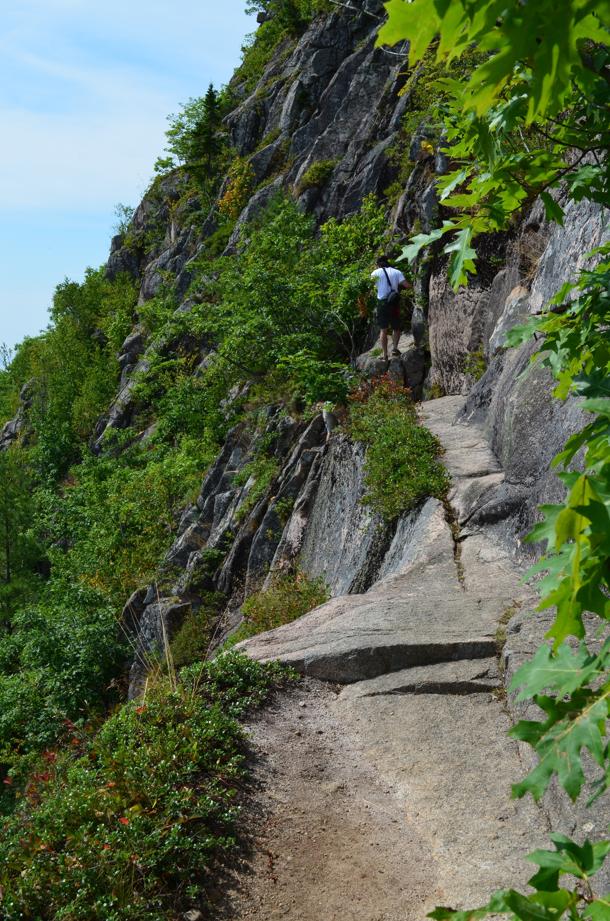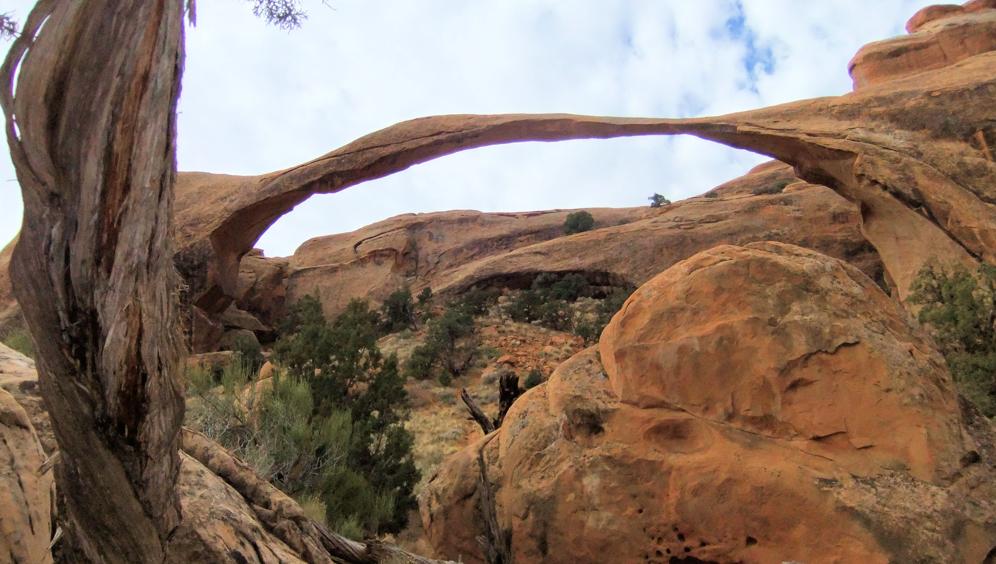

One in a series of occasional stories celebrating the National Park Service’s centennial.
The US National Parks are so carefully chosen to be spectacular that you can see something wonderful through the windshield of your car. But to experience the best of the parks, you need to get out onto the trails.
My wife and I collect National Parks — we’ve visited 25 of the 59 parks — and we collect great trails. Here are 10 trails worth traveling to.
Let’s start with The Precipice in Acadia National Park, Maine, a 4-mile climb up a 1,000-foot sheer cliff face, aided by iron ladders, to the peak of Champlain Mountain (1,058 feet), the best view in Acadia. From the peak, the Porcupine Islands look like a family of enormous hedgehogs snoozing in Frenchman Bay. The Precipice offers skin-tingling exposure on high cliffs. Your life is in your hands on sections of this trail, but in whose hands would you rather have it? A tamer but still spectacular option would be Beachcroft Path, a 4.3-mile, moderately difficult loop up the other side of Champlain. It is one of the most beautifully crafted trails in any park; like a spiral stone staircase up the side of a mountain.
At 7.7 miles, the Devils Garden Primitive Loop in Arches National Park, Utah, is a moderately difficult day hike away from crowds and past a variety of natural stone arches. The first mile will be busy with tourists hell-bent on getting a selfie with one of the world’s longest natural stone spans, Landscape Arch, while it is still around. Landscape Arch looks impossibly thin — it has been described as a 290-foot taffy pull of stone. Nobody will be surprised when it collapses. The crowds thin out as the trail gets rougher. It passes — or passes under — 10 more arches, and traverses the back of massive stone fins that someday may erode into arches. Check back in a few million years. Another must-do hike here is the 3-mile round-trip hike to Delicate Arch, a formation you may have seen pictured on the Utah state license plate. The trail is cleverly designed to hide the arch until the very last second; it is an enormous payoff for such a short hike.
While in Utah, swing by Bryce Canyon National Park for Fairyland Loop, an 8-mile, meandering day-hike through castles of orange hoodoos. Many of the trails through Bryce could compete for this list. If dragons and gnomes existed, this is where they would live, among the bristlecone pine and eroding stone pillars that can look like giant piles of melting sherbet.
On a trip to Glacier National Park, in Montana, we hiked the Garden Wall section of the Highline Trail, an 11.6-mile day hike, mostly above tree-line in bear country. This hike is not up mountains, it is among them: The foreground is full of steep green hills, and behind them rows of heavy gray peaks dotted with snowfields. It starts with a fairly easy walk along a cliff ledge — with a knee-buckling drop-off on one side. Near the end of a long a rewarding day in the mountains, the trail dips briefly into the woods. We kept up a loud conversation about what a great trip this was. Would hate to ruin a good hike by surprising a grizzly.
The Bright Angel Trail in Grand Canyon National Park, Ariz., is a Holy Grail trail. Just keep your camera handy and enjoy the easy downhill. Apply early for a permit to overnight at the Bright Angel campground at the bottom of the canyon, making a 19-mile round trip, or forget the permit and incorporate Bright Angel into a 12-mile day hike to Plateau Point, a green prow jutting above the Colorado River. This is mountain climbing in reverse, so remember the climb out of the canyon is roughly as demanding as hoofing up Mount Washington.
More than 10 years later, the 15-mile round-trip dayhike up the Longs Peak Keyhole Route in Rocky Mountain National Park, in Colorado, remains the hardest hike we’ve done. It’s important to have a good weather forecast and an early start, to be off the summit before any afternoon thunderstorms. We signed in at the trailhead at 3 a.m., and there were plenty of people ahead of us. A few hours into the hike, the rising sun lit the great vertical face of Longs Peak, and the route became a tough slog over boulders, up steep slides of broken rock, and onto an exposed ledge known as The Narrows. The meticulous scramble along that ledge — a few feet wide in spots and suspended hundreds of feet in the air — was so intense that I’m getting a chill just typing about it. As we made the final climb to the mountain’s 14,255-foot peak, strangers already on the summit cheered for us. I teared up, overpowered by feelings of comradery after such a test of endurance and nerve. In fact, it’s getting a little dusty in here right now.
The scenery of Yosemite National Park in California is overpowering on the 16-mile round trip to the 8,800-foot summit of Half Dome, a hulking rock mountain that looks freshly cleaved by a giant axe. The panorama of silver-gray peaks is parted by the deep green gouge of Yosemite Valley. The hike’s highest thrill is saved for the final push to the summit: a 400-foot climb up a steep rock wall with the aid of cables strung between poles loosely stuck into holes drilled in the stone. It seems crazily dangerous, but as the National Park Service dryly notes on its website: “Relatively few people have fallen and died on the cables.’’
Back to Utah once more, to Zion National Park, for the 16-mile river hike through Zion Narrows, a slot canyon with walls up to 2,000 feet high and in places just 20 feet wide. For parts of this hike, best done as a two-day overnight, the sky is just a thin blue stripe between the towering canyon walls. Figure spending half the hike sloshing through the calf-deep water of the Virgin River, where a walking stick is a critical piece of gear.
Mark Arsenault can be reached at mark.arsenault@globe.com. Follow him on Twitter @bostonglobemark



